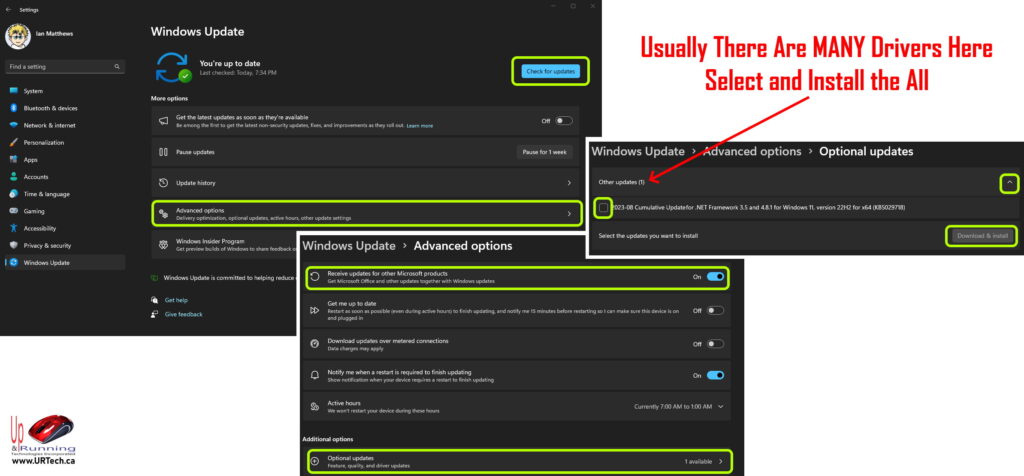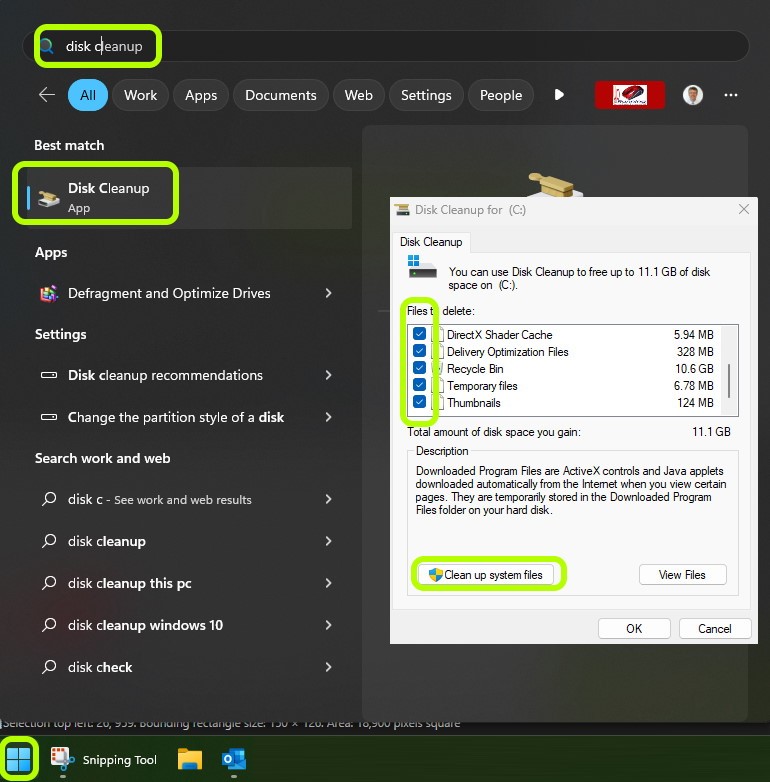If your Windows 10 or Windows 11 or even Windows Server, is having problems like:
- slow boot time
- high cpu
- high memory usage
- sluggish performance
- service problems
- Start Menu / bar problems
- program crashes
- blue / green screen of death crashes
there are a five easy things you can do to fix the problems:
1 – Uninstall Windows Bloatware Programs
Just right click on your start button and select INSTALLED APPS (or PROGRAMS AND FEATURES… depends on the version and build of Windows you are on). Uninstall any programs you don’t recognize or programs you don’t care about anymore.
If you bought your computer from From one of the big manufacturers like Dell or HP, it most likely has a number of useless programs that they were paid to install prior to shipping the computer to you.
To get you started, here are more than 30 programs that most tech’s consider “bloatware” which you can likely safely uninstall:
| Adobe Flash and Shockwave Player | Mail & Calendar |
| Bing Bar | Microsoft Silverlight |
| Bonjour | People |
| Candy Crush | Power2Go |
| CCleaner | PowerDVD |
| Coupon Printer For Windows | QuickTime |
| CyberLink – all products | Roxio – all products |
| Dell Stage | Trello |
| Family | uTorrent |
| Feedback Hub and Get Help | Walmart Photo Center |
| Goove Music | WildTanget Games |
| HP JumpStart – all products | Windows Media Player |
| HP My Room | WinRAR |
| InterVideo WinDVD | Xbox Live |
| Java | XPS Viewer |
| Lenovo Smile Dock | Zoom |
2 – Force a Windows Update & Check For OPTIONAL Updates
To perform an full Windows Update:
- Click START, then the SETTINGS COG
- Click WINDOWS UPDATE (on Windows 11 that is in the top right corner)
- Click ADDITIONAL OPTIONS
- Turn On, RECEIVE UPDATES FROM OTHER MICROSOFT PRODUCTS
- Click OPTIONAL UPDATES and click the ^ arrow at the right
- Select all of these updates
- Click OK and OK to get back to the main WINDOWS UPDATE screen and click CHECK FOR UPDATES
If there are updates pending, install ALL of them, then reboot and follow the process above again

3 – Delete all Temporary Files
We have several comprehensive articles on how and what to delete from Windows, but here are some easy, fast and substantial places to start from:
NOTE: You will likely need to enable viewing of HIDDEN FILES. Don’t worry, it’s easy and we have screen shots to show you how to view HIDDEN FILES here.
- C:\WINDOWS\TEMP
- Just press CNTL+A and then the DELETE key on your keyboard
- Yes, you can safely delete EVERYTHING in here. Any files that are in use will not delete and that is just fine, simply select SKIP FILES
- C:\USERS\{user name}\APPDATA\LOCAL\TEMP
- Look for garbage files and folders on C:\ (ie. C:\TEMP)
- Empty the Recycle Bin
Run the DISK CLEANUP tool as shown in the screenshot below. After you have run it once, do it again, but this time click the CLEAN UP SYSTEM FILES button.

If you want to really get into it, you can stop the WINDOWS UPDATE service, then delete C:\WINDOWS\SOFTWARE DISTRIBUTION folder, then start the WINDOWS UPDATE service. This will delete all of the old Windows Updates you have already installed that are likely just taking up space on your drive.
I am also a big fan of deleting any old users from the machine, but that is too advanced for this document.
4 – Stop Programs From Starting Up Automatically
We can be very frustrating to have a large number of programs startup automatically when you first log into a computer. In addition to wasting your time, many of these programs are burning your resources (CPU and memory) while opening your machine to both security risks and technical problems.
The easiest way to stop a program from starting up automatically is to uninstall it (as suggested in step 1 above). The next easiest way to stop a program from starting up automatically is to:
- Right click on the Start Bar and select TASK MANAGER
- Click STARTUP APPS (on the left in Windows 11, on the top in Windows 10)
- Right click on any program you don’t want to have start up automatically and select DISABLE
- This will NOT uninstall the program, lock it, or damage it in any way… it just stops it from starting up automatically
We like to clean out the registry startup keys, but that is beyond the scope of this article.
5 – Run a Repair On Your Windows Installation
Performing a check of all your system files is a great idea that takes little time and fixes so many problems:
- Right click on the START button and select POWERSHELL (run as Admin) or CMD (run as Admin) or WINDOWS TERMINAL (run as Admin)
- Type
SFC /SCANNOWand press the ENTER key - Reboot when it is done
- Right click on the START button and select POWERSHELL (run as Admin) or WINDOWS TERMINAL (run as Admin)
- Note that an old CMD prompt will not work for this command
- Type
DISM.exe /Online /Cleanup-image /Restorehealthand press the ENTER key - Reboot
These five processes will fix nearly all Windows problems that are related to the software.
If you still have problems after these five steps, you may have a hardware problem, like bad memory or an overheating CPU or problems with your storage SSD. The fix for hardware problems is beyond the scope of this article, but we suggest you take your computer in to your LOCAL computer dealer (avoid the BestBuy’s and look for a little guy).



2 Comments
SOLVED: What is WaasMedic & Can Its Logs Be Deleted Safely? – Up & Running Technologies, Tech How To's · December 4, 2023 at 6:49 pm
[…] a tool like CCleaner which safely deletes these junk […]
SOLVED: What Is The Connected Devices Platform Service & Should It Be Disabled? – Up & Running Technologies, Tech How To's · August 30, 2023 at 9:49 pm
[…] and / or RAM, you should try to repair your Windows install. We have very popular article titled Easy 5 Step Guide To Fixing Most Windows Problems and the last item (#5) is the one you should do […]